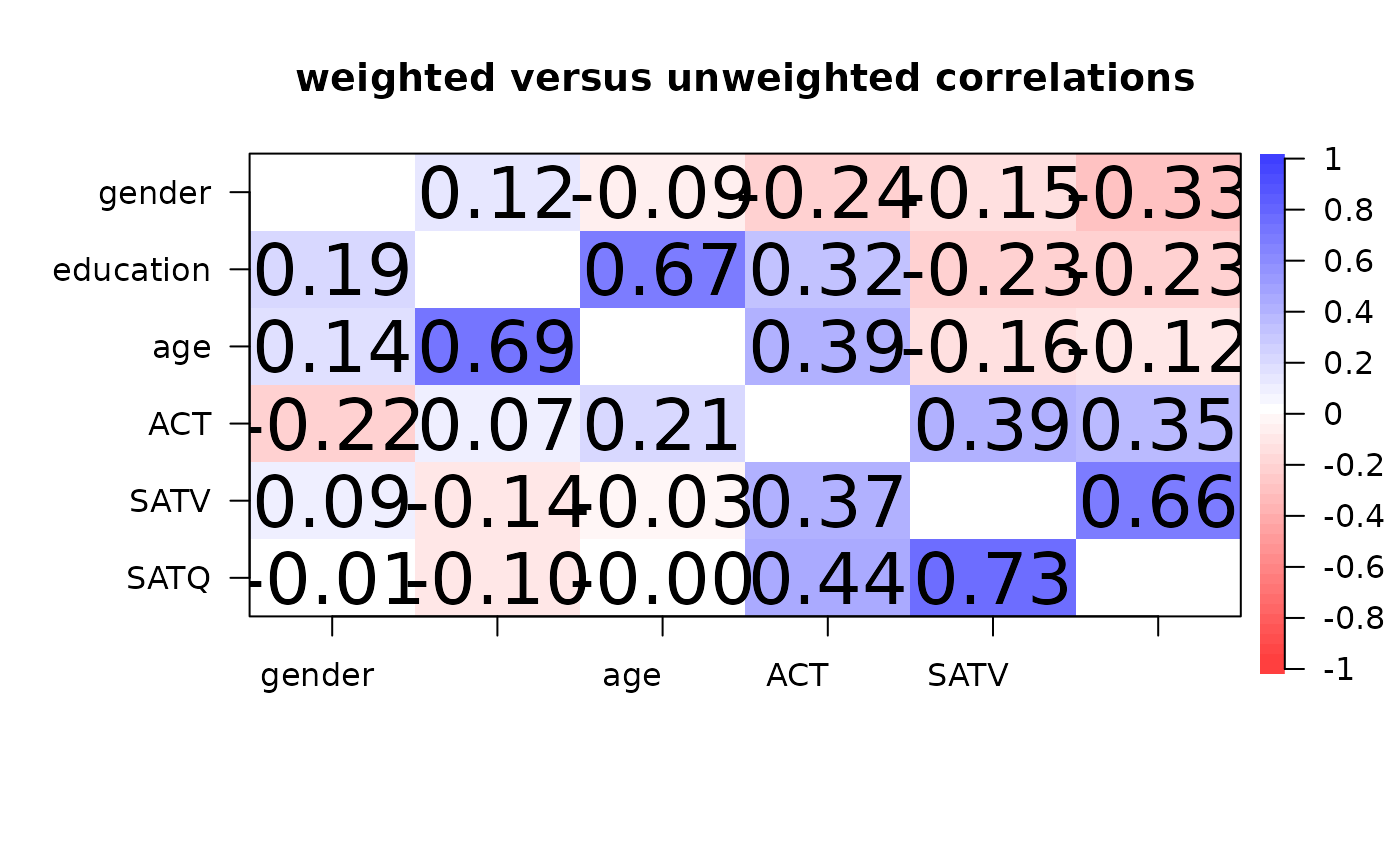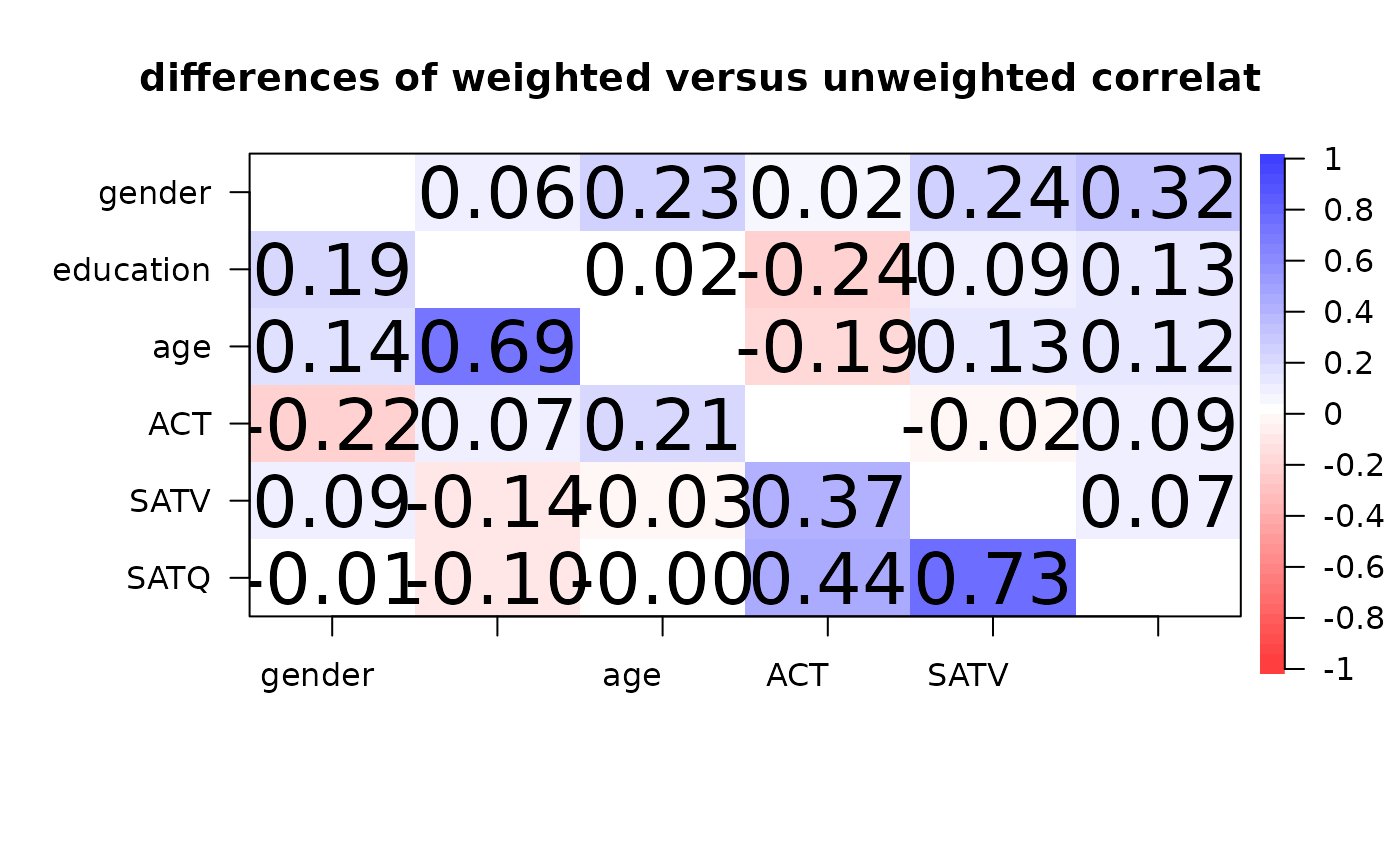The sample size weighted correlation may be used in correlating aggregated data
cor.wt.RdIf using aggregated data, the correlation of the means does not reflect the sample size used for each mean. cov.wt in RCore does this and returns a covariance matrix or the correlation matrix. The cor.wt function weights by sample size or by standard errors and by default return correlations.
cor.wt(data,vars=NULL, w=NULL,sds=NULL, cor=TRUE)Arguments
Details
A weighted correlation is just \( r_{ij} = \frac{\sum(wt_{k} (x_{ik} - x_{jk})}{\sqrt{wt_{ik} \sum(x_{ik}^2) wt_jk \sum(x_{jk}^2)}} \) where \(x_{ik}\) is a deviation from the weighted mean.
The weighted correlation is appropriate for correlating aggregated data, where individual data points might reflect the means of a number of observations. In this case, each point is weighted by its sample size (or alternatively, by the standard error). If the weights are all equal, the correlation is just a normal Pearson correlation.
Used when finding correlations of group means found using statsBy.
Value
- cor
The weighted correlation
- xwt
The data as weighted deviations from the weighted mean
- wt
The weights used (calculated from the sample sizes).
- mean
The weighted means
- xc
Unweighted, centered deviation scores from the weighted mean
- xs
Deviation scores weighted by the standard error of each sample mean
Note
A generalization of cov.wt in core R
Examples
means.by.age <- statsBy(sat.act,"age")
wt.cors <- cor.wt(means.by.age)
lowerMat(wt.cors$r) #show the weighted correlations
#> gendr edctn age ACT SATV SATQ
#> gender 1.00
#> education 0.12 1.00
#> age -0.09 0.67 1.00
#> ACT -0.24 0.32 0.39 1.00
#> SATV -0.15 -0.23 -0.16 0.39 1.00
#> SATQ -0.33 -0.23 -0.12 0.35 0.66 1.00
unwt <- lowerCor(means.by.age$mean)
#> gendr edctn age ACT SATV SATQ
#> gender 1.00
#> education 0.19 1.00
#> age 0.14 0.69 1.00
#> ACT -0.22 0.07 0.21 1.00
#> SATV 0.09 -0.14 -0.03 0.37 1.00
#> SATQ -0.01 -0.10 0.00 0.44 0.73 1.00
mixed <- lowerUpper(unwt,wt.cors$r) #combine both results
cor.plot(mixed,TRUE,main="weighted versus unweighted correlations")
 diff <- lowerUpper(unwt,wt.cors$r,TRUE)
cor.plot(diff,TRUE,main="differences of weighted versus unweighted correlations")
diff <- lowerUpper(unwt,wt.cors$r,TRUE)
cor.plot(diff,TRUE,main="differences of weighted versus unweighted correlations")
